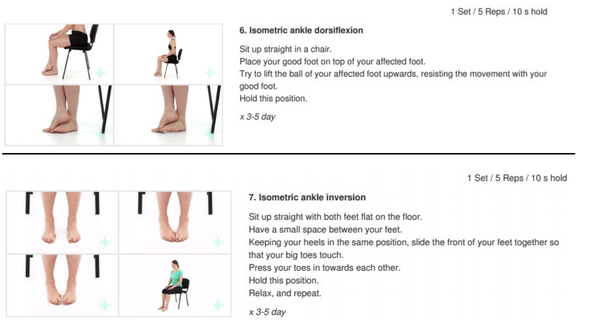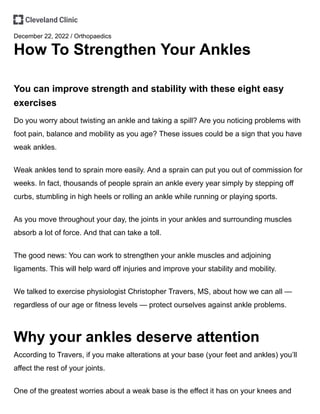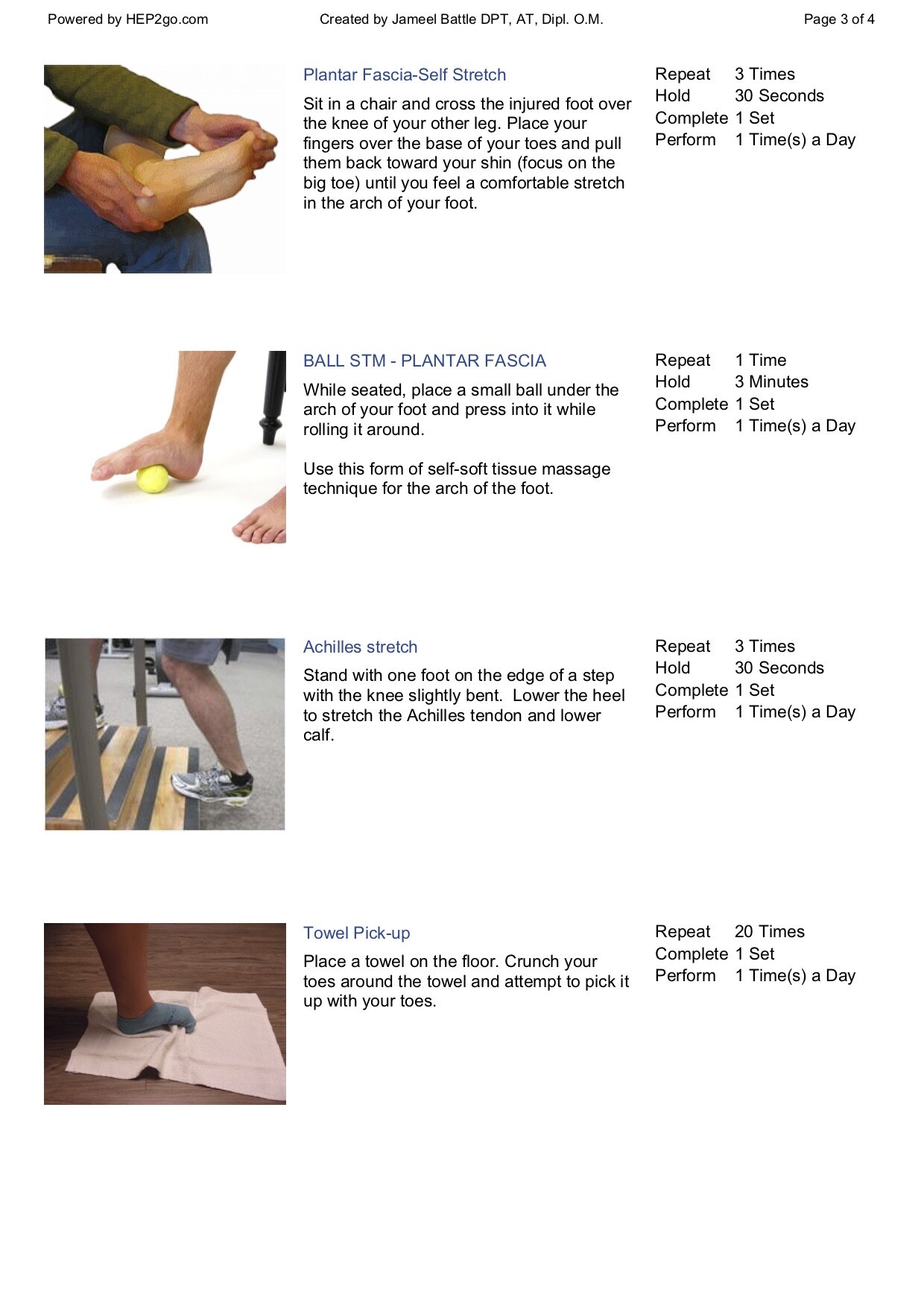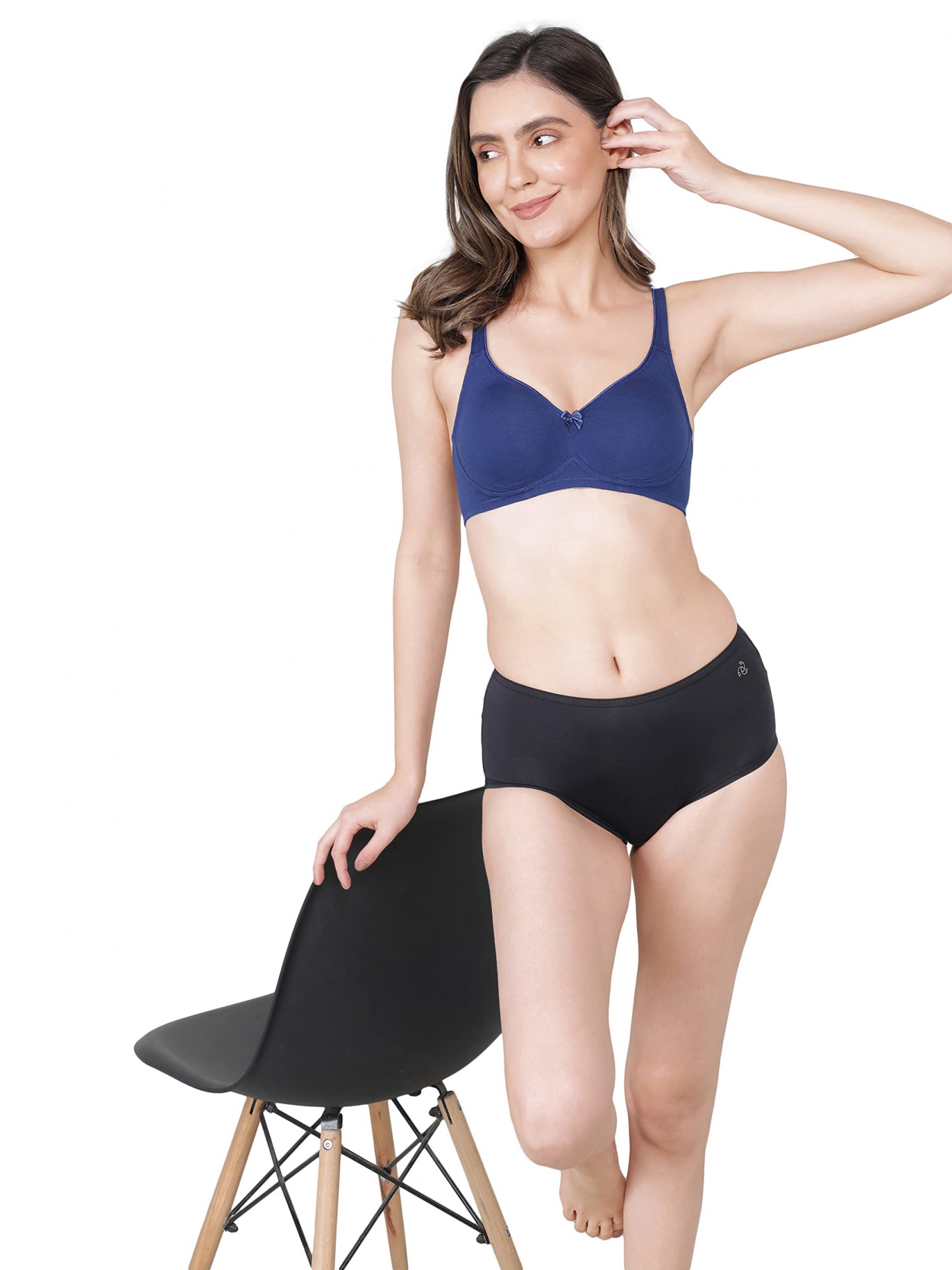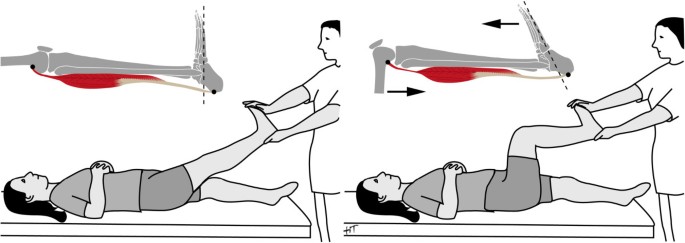
Background Musculus gastrocnemius tightness (MGT) can be diagnosed by comparing ankle dorsiflexion (ADF) with the knee extended and flexed. Although various measurement techniques exist, the degree of knee flexion needed to eliminate the effect of the gastrocnemius on ADF is still unknown. The aim of this study was to identify the minimal degree of knee flexion required to eliminate the restricting effect of the musculus gastrocnemius on ADF. Methods Bilateral ADF of 20 asymptomatic volunteers aged 18-40 years (50% female) was assessed prospectively at six different degrees of knee flexion (0°, 20°, 30°, 45°, 60°, 75°, Lunge). Tests were performed following a standardized protocol, non weightbearing and weightbearing, by two observers. Statistics comprised of descriptive statistics, t-tests, repeated measurement ANOVA and ICC. Results 20 individuals with a mean age of 27 ± 4 years were tested. No significant side to side differences were observed. The average ADF [95% confidence interval] for non weightbearing was 4° [1°-8°] with the knee extended and 20° [16°-24°] for the knee 75° flexed. Mean weightbearing ADF was 25° [22°-28°] for the knee extended and 39° [36°-42°] for the knee 75° flexed. The mean differences between 20° knee flexion and full extension were 15° [12°-18°] non weightbearing and 13° [11°-16°] weightbearing. Significant differences of ADF were only found between full extension and 20° of knee flexion. Further knee flexion did not increase ADF. Conclusion Knee flexion of 20° fully eliminates the ADF restraining effect of the gastrocnemius. This knowledge is essential to design a standardized clinical examination assessing MGT.

Gastrocnemius Contracture in Patients With and Without Foot Pathology - James R. Jastifer, Jessica Marston, 2016

Ankle range of motion and dynamic balance in recreational Sepak Takraw players with and without ankle injury a comparative study – тема научной статьи по клинической медицине читайте бесплатно текст научно-исследовательской работы
Myofascial force transmission between the ankle and the dorsal knee: A study protocol

A scoping review of portable sensing for out-of-lab anterior cruciate ligament injury prevention and rehabilitation

Knee injury prevention: Hip and ankle strategies
Reliability of ultrasonographic measurement of muscle architecture

The influence of knee position on ankle dorsiflexion - a biometric study, BMC Musculoskeletal Disorders

PDF) The influence of knee position on ankle dorsiflexion - A biometric study

The effects of alignment of an articulated ankle-foot orthosis on lower limb joint kinematics and kinetics during gait in individuals post-stroke - ScienceDirect
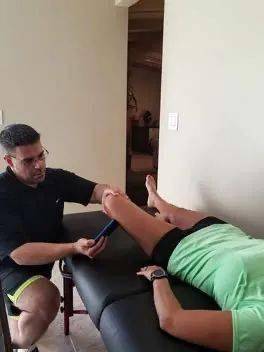
体能资讯|下肢肌肉延展性测试-给私人教练的回顾_手机搜狐网

PDF] Measurement of ankle dorsiflexion: a comparison of active and passive techniques in multiple positions.
Reliability of ultrasonographic measurement of muscle architecture
